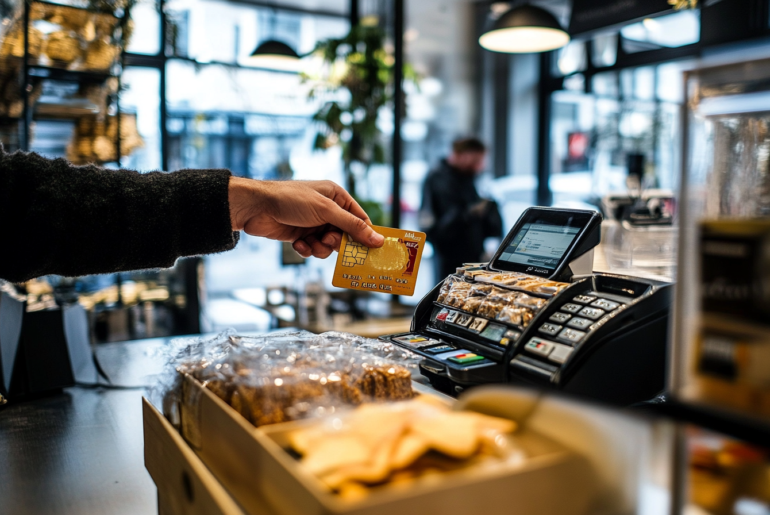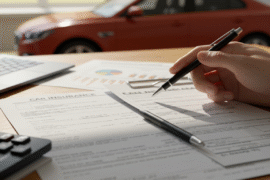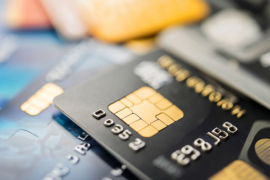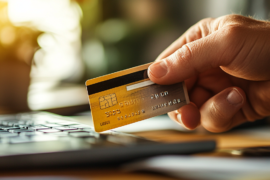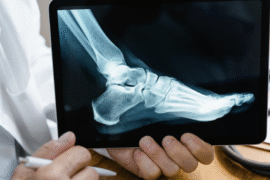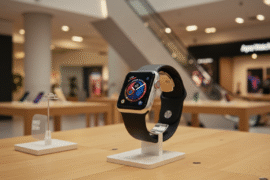This article may contain references to products or services from one or more of our advertisers or partners. We may receive compensation when you click on links to those products or services. Nonetheless, our opinions are our own.
The information presented in this article is accurate to the best of our knowledge at the time of publication. However, information is subject to change, and no guarantees are made about the continued accuracy or completeness of this content after its publication date.
- Key Highlights
- Understanding Debit Card Usage Abroad
- Exploring Transaction Fees and Currency Exchange
- Tips for Keeping Your Debit Card Safe While Traveling
- Finding the Best ATMs and Banks in Your Destination
- Advantages of Using a Debit Card for Travel
- What to Do If Your Debit Card Doesn’t Work Abroad
- Options Besides Debit Cards for Traveling Abroad
- Frequently Asked Questions
- Recommended Reads
Key Highlights
When you plan a trip to another country, you may have many questions about money. One crucial question might be how to access your funds while you’re there. You may wonder, “Can I use my debit card in this place? ”
The short answer is yes, but there are important details to consider that could affect your travel experience. Knowing how your debit card works abroad can help you avoid surprise fees and ensure you can access your money when needed. Below, we cover key points like ATM access, transaction fees, and the importance of notifying your bank.
Understanding Debit Card Usage Abroad
When planning your travels, it’s essential to understand how your debit card works in other countries. Many travelers prefer using debit cards because they allow them to manage money without carrying large amounts of cash. However, you must make sure your card is ready for international use. Keep the following in mind:
- Look for global acceptance: Not all debit cards work everywhere. Before you go, ensure your card displays the Visa or Mastercard logo, as these are widely accepted.
- Tell your bank: Inform your bank about your travel plans and destinations. This helps prevent your card from being blocked or frozen due to unusual activity.
- Know about fees: Be aware of any charges for foreign transactions or ATM withdrawals. These vary by bank and can impact your total spending.
It’s wise to have a backup payment method, such as a credit card or local currency. That way, if your debit card encounters problems, you can still make purchases.
Exploring Transaction Fees and Currency Exchange
Transaction fees are standard when using your debit card abroad. Many banks charge between 1% and 3% of the purchase amount to convert one currency into another. Although the fees may seem small, they can quickly add up.
Currency exchange is another factor to consider. When you use your debit card internationally, the amount is usually converted at the current exchange rate. Some stores may offer to charge you in your home currency, but this often comes with extra costs. It’s usually better to pay in the local currency.
Currency Conversion Overview
| Aspect | Details |
|---|---|
| Conversion Method | Dynamic currency conversion vs. bank-rate conversion |
| Charges | Foreign transaction fees may apply |
| Tip | Use local currency when paying to avoid extra charges |
Knowing how currency exchange and fees work will help you manage your travel budget more effectively and avoid surprises.
Tips for Keeping Your Debit Card Safe While Traveling
Traveling can be exciting, but protecting your finances is just as important. Here are some practical tips for using your debit card safely:
- Use ATMs wisely: Choose ATMs in well-lit, secure areas—preferably inside bank branches. Avoid standalone machines, especially in busy tourist spots.
- Watch for skimmers: Before inserting your card, check the ATM’s card slot and keypad for anything unusual. Skimming devices can steal your card details.
- Set spending alerts: Use your bank’s app to receive transaction alerts. This allows you to detect unauthorized charges quickly.
- Monitor your accounts: Regularly check your balance and transactions while traveling.
Debit Card Pros and Cons While Traveling
| Advantages | Disadvantages |
|---|---|
| Widely accepted globally | Daily withdrawal limits |
| No interest on transactions | Potential foreign transaction fees |
| Easy monitoring via apps | Less protection compared to credit cards |
These safety tips and staying informed about fees will help you manage your money abroad.
Voted "Best Overall Budgeting App" by Forbes and WSJ
Monarch Money helps you budget, track spending, set goals, and plan your financial future—all in one app.
Get 50% OFF your first year with code MONARCHVIP
Finding the Best ATMs and Banks in Your Destination
Finding the right ATMs while traveling can make your trip smoother. Start by researching the banks in your destination. Large banks often offer better exchange rates and more reliable services.
Tips for Locating ATMs Abroad
- Look for global networks: Search for ATMs linked to Visa Plus or Mastercard Cirrus for broader access.
- Skip airport ATMs: These often charge higher fees and offer worse exchange rates. Visit ATMs in the city for better deals.
- Use bank locator tools: Many banks provide ATM locators and information on operating hours via their websites or apps.
International ATM Fee Estimates
| Destination | Preferred Bank | ATM Fee (Approx.) |
|---|---|---|
| Spain | Banco Santander | €2.50 |
| Japan | Seven Bank | ¥200 |
| Australia | Westpac | A$2.00 |
Using these tools and choosing your ATM locations wisely can help you save money while traveling.
Advantages of Using a Debit Card for Travel
Using a debit card while traveling offers several benefits. Mobile banking apps allow you to monitor your spending in real time and receive alerts for purchases, helping you spot unauthorized charges immediately. Debit cards are accepted in most parts of the world and do not charge interest on transactions.
To manage your money effectively during travel, follow safety guidelines and understand your card’s fee structure. Choose trusted ATMs connected to global networks and avoid those in airports due to higher fees.
Helps You Avoid Carrying Cash
Debit cards can reduce the need to carry large amounts of cash. You can save on fees by researching your destination’s banking system and choosing international banks with better exchange rates. Look for ATMs that use Visa Plus or Mastercard Cirrus, and use bank locator tools to find them. This, combined with mobile app tracking and zero interest on spending, makes debit cards a safe and convenient option.
Ability to Track Spending
One of the most significant advantages of using a debit card is the ability to track your spending. Mobile apps your bank provides let you monitor purchases and receive real-time alerts. This helps you budget wisely and control your money while exploring new places.
What to Do If Your Debit Card Doesn’t Work Abroad
If your debit card stops working while you’re overseas, don’t panic. Take the following steps:
Try a different ATM: The issue might be with the specific machine or network.
Check card compatibility: Confirm that the ATM supports your card network, such as Visa or Mastercard.
Contact your bank: Call your bank’s international customer service number. They may need to unlock your card or remove a temporary block.
Quick Recovery Tips
| Tip | Description |
|---|---|
| Multiple payment methods | Carry a credit card or cash as a backup |
| Bank’s international number | Write this down before you travel |
| Local currency | Keep some cash on hand for small purchases |
Planning ensures you’re ready to handle any problems and still access your money while abroad.
Options Besides Debit Cards for Traveling Abroad
If you want to avoid potential issues with debit cards, here are some reliable alternatives:
- Travel credit cards usually have no foreign transaction fees, offer travel rewards, and include strong fraud protection. Be sure to pay your balance to avoid interest.
- Prepaid travel cards: These cards allow you to load money in either your home currency or the local currency. They help control spending and are widely accepted.
- Cash: Always carry local currency for taxis, markets, and places that don’t accept cards.
- Mobile payment apps: Apps like Apple Pay or Google Wallet can be helpful to if accepted in your destination.
- Traveler’s checks: Though less common now, they remain a secure backup in some regions.
Choose the options that best suit your travel style, and always have more than one way to pay.
Frequently Asked Questions
Can I use my debit card internationally?
Yes, you can use your debit card in another country. However, it depends on your bank’s rules and whether the card is accepted at your destination.
What should I check before using my debit card in another country?
Check with your bank about international transaction fees, ATM access, and whether you need to notify them of your travel plans.
Are there any fees for using a debit card abroad?
Yes, most banks charge fees for international transactions, typically between 1% and 3%. ATM providers may also charge their fees.
How can I avoid extra fees when using my debit card abroad?
Use a debit card that doesn’t charge foreign transaction fees, and make fewer ATM withdrawals by taking out more significant amounts.
Can I use my debit card to withdraw cash at an ATM in another country?
Yes, if the ATM supports your card’s network (such as Visa or Mastercard). Be aware of local ATM fees.

Reviewed and edited by Albert Fang.
See a typo or want to suggest an edit/revision to the content? Use the contact us form to provide feedback.
At FangWallet, we value editorial integrity and open collaboration in curating quality content for readers to enjoy. Much appreciated for the assist.
Did you like our article and find it insightful? We encourage sharing the article link with family and friends to benefit as well - better yet, sharing on social media. Thank you for the support! 🍉
Article Title: Can You Use Your Debit Card Abroad? Avoid These Hidden Fees (Up to 3%)!
https://fangwallet.com/2025/03/25/debit-card-abroad/The FangWallet Promise
FangWallet is an editorially independent resource - founded on breaking down challenging financial concepts for anyone to understand since 2014. While we adhere to editorial integrity, note that this post may contain references to products from our partners.
The FangWallet promise is always to have your best interest in mind and be transparent and honest about the financial picture.
Become an Insider

Subscribe to get a free daily budget planner printable to help get your money on track!
Make passive money the right way. No spam.
Editorial Disclaimer: The editorial content on this page is not provided by any of the companies mentioned. The opinions expressed here are the author's alone.
The content of this website is for informational purposes only and does not represent investment advice, or an offer or solicitation to buy or sell any security, investment, or product. Investors are encouraged to do their own due diligence, and, if necessary, consult professional advising before making any investment decisions. Investing involves a high degree of risk, and financial losses may occur including the potential loss of principal.
Source Citation References:
+ Inspo
There are no additional citations or references to note for this article at this time.
